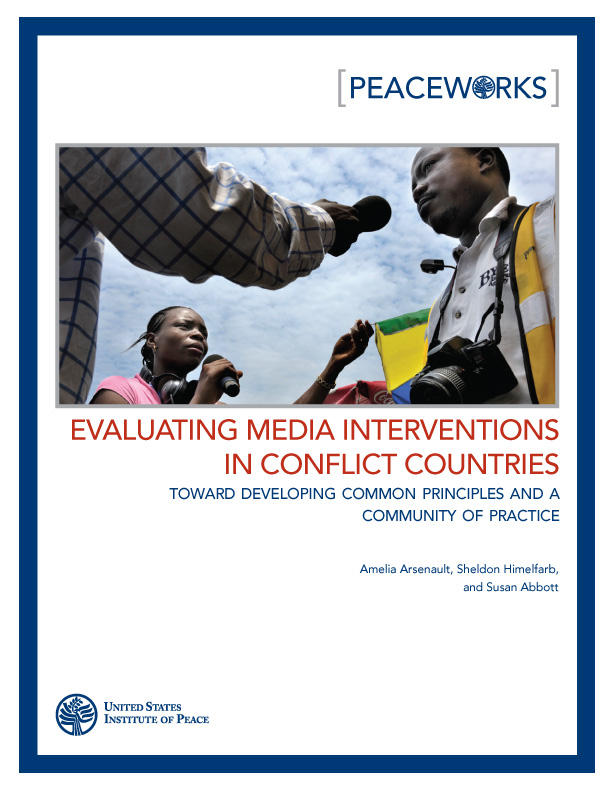Experts lay out a set of common principles for assessing how media programs in conflict zones help or hinder peacebuilding.

Summary
- Recognizing media’s heightened importance in peacebuilding, governmental and nongovernmental organizations (NGOs), multilateral organizations, broadcasters, and community activists have expanded their efforts in using the media to prevent, manage, and reconcile conflicts.
- Poorly designed media interventions, no matter how well intentioned, may exacerbate tensions and undermine peacebuilding efforts.
- In the face of the global economic downturn, policymakers and politicians no longer have the economic or political capital to fund projects without evidence of their efficacy. As a consequence, implementers and donor organizations alike are under increased pressure to demonstrate the utility of the programs they produce or fund.
- Improving and expanding evaluation of current and future projects is essential because evaluation provides critical evidence that can inform future programs and better direct donors and policymakers in the judicious, economical allocation of funding and policy.
- A wide array of media development practitioners, donors, international broadcasters, and methodologists—all with extensive experience working in media initiatives in conflict environments—met in Caux, Switzerland, in December 2010, to establish the Caux Guiding Principles, whose full text is in this report.
- Based on a careful appraisal of the current status of monitoring and evaluating media interventions in conflict countries, the Caux Principles outline measures that stakeholders can take to improve evaluation.
- The Caux Principles urge those working in media and conflict initiatives to take several concrete steps to improve evaluation. These include enabling better collaboration between donors and implementers, expanding financial support for evaluation, encouraging realistic and honest assessments of project successes and failures, designing flexible evaluation plans that are sensitive to changing conditions on the ground, and engaging with local researchers.
About the Report
The Annenberg School for Communication at the University of Pennsylvania, Fondation Hirondelle, Internews Network, the United States Broadcasting Board of Governors, and the Center of Innovation for Media, Conflict, and Peacebuilding at the United States Institute of Peace commissioned this report following a five-day multistakeholder meeting of donors, implementers, and academics on how to better evaluate media’s impact in ameliorating conflict, at the Caux Conference Center in Switzerland. The report both reviews the state of the art in evaluating media interventions in conflict and outlines the Caux Guiding Principles (hereinafter, Caux Principles) for improving the evaluation process. It stresses effective evaluation as a critical step forward for using the media in conflict prevention and peacebuilding.
About the Authors
Amelia Arsenault is an assistant professor of communication at Georgia State University, and the Media and Democracy Research fellow at the Center for Global Communication Studies at the Annenberg School for Communication, University of Pennsylvania.
Sheldon Himelfarb directs the USIP Center of Innovation for Media, Conflict, and Peacebuilding. He has managed peacebuilding programs in numerous conflicts, including in Bosnia, Iraq, Angola, Liberia, Macedonia, and Burundi, and received the Capital Area Peacemaker Award from American University.
Susan Abbott, deputy director of program development at Internews Network, works with Internews programs worldwide on monitoring and evaluation and on research and learning. Abbott was previously associate director of the Center for Global Communication Studies at the Annenberg School for Communication, University of Pennsylvania. Before that, she was a Media Development Division program officer at the International Research and Exchanges Board in Washington, D.C.
Explore Further
- Improving the State-of-the-Art: The Peacebuilding Evaluation Project Evidence Summit
News Feature | January 2012